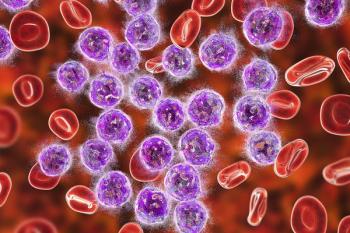
Abstract 8509
R-ICE versus R-DHAP in relapsed patients with CD20 diffuse large B-cell lymphoma followed by autologous stem cell transplantation: CORAL study
R-ICE versus R-DHAP in relapsed patients with CD20 diffuse large B-cell lymphoma followed by autologous stem cell transplantation: CORAL study
C. Gisselbrecht, B. Glass, N. Mounier, et al
Methods: This randomized Intergroup trial compared rituximab (Rituxan) with ifosfamide, etoposide, carboplatin (R-ICE) and rituximab with dexamethasone aracytine and cisplatin (R-DHAP) in DLBCL CD 20+ patients in their first relapse or refractory to first-line therapy. Responding patients received BEAM (carmustine, cytarabine, etoposide, and melphalan) and ASCT and were then randomized to observation or rituximab for 1 year.
Results: Patients with prior exposure to rituximab had more refractory disease and adverse prognostic factors. An intent-to-treat analysis of the first patients (median age 55) showed an ORR of 63%, with 38% in complete remission, with no differences between the ORR for R-ICE (63.5%) and R-DHAP (62.8%) or in mobilization adjusted response rates. Factors significantly affecting response rate (P < .0001) were refractory/relapse < 12 months (46% vs 88%), secondary IPI >1 (52% vs 71%) and prior exposure to rituximab (51% vs 83%).
Conclusions: R-ICE and R-DHAP were similarly effective. A response rate > 80% was observed in patients without adverse prognostic factors. However, patients with early relapses/ refractory after up-front rituximab-based chemotherapy had a poor response rate and prognosis. Longer follow-up is necessary to evaluate the second randomization.
Newsletter
Stay up to date on recent advances in the multidisciplinary approach to cancer.





















































































